- Izu Peninsula top
- General
- Earthquake and volcano
- Too many deer in Izu
- East
- Ito - its old buildings
- Anjin = Wlliam Adams and Ito
- Religious Charisma Nichiren
- Washtub race
- Yokikan - Spa ryokan
- Minami-Kaikisen: Auberge
- Ike and its paddy fields
- Summer has come!!!
- Inatori - fish, spa and more
- Central
- Banjo Waterfall
- Mount Amagi
- Shuzenji - old spa town
- Arabashiri - Bandai-Jozo
- Oomi Land - heart of Izu
- West and south
- Heda on the west coast
- Toi - Gold mine
- Matsuzaki - namako wall
- Izu-no-Chohachi - Plasterer
- Kumomi on the west coast
- Shimoda - Tojin-Okichi
- Cottage life
- Fishing in Usami
- Start of my fishing life
- Training camp in Amagi
- Cottage life / music&drinks
- Party in Izu - part 2
- Party in Izu - part 1
- Sunday morning concert
- Ice and snow in Amagi
- My summer house
- Restaurant and eatery
- Let’s eat Izu-Deer!
- Isui-an - exquisite soba
- Sugizen - big prawn fry
- Sayang - Bali restaurant
- Restaurant Tanaka
My summer house and a new built-in bookshelf
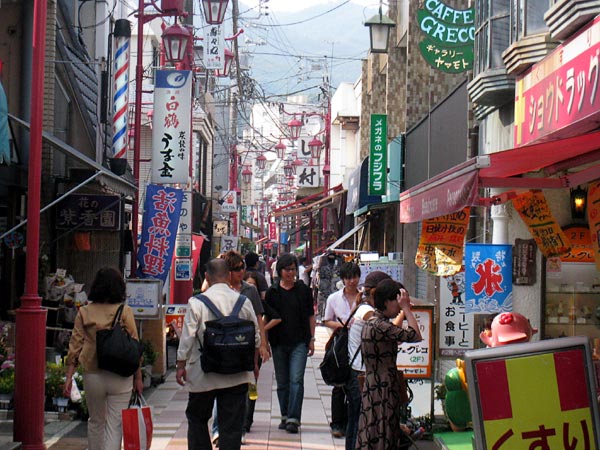
"Ito-ginza" - The main shopping street in Ito is a narrow and intimate place for pedestrians.
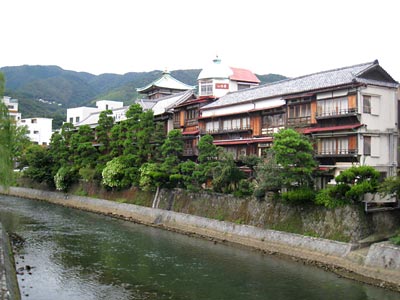
Along the river Matsukawa there are buildings from the good old days.
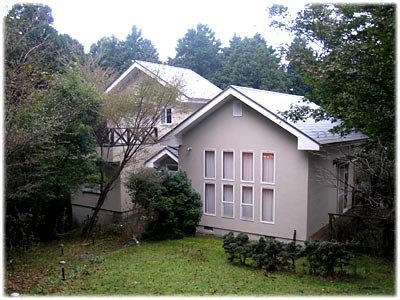
This is my summer house standing in the morning dawn.
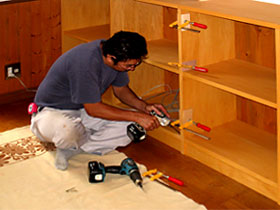
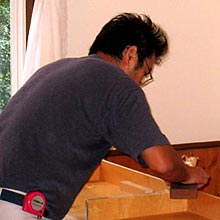
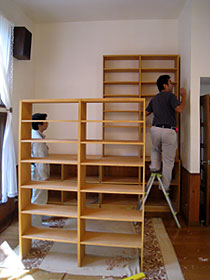
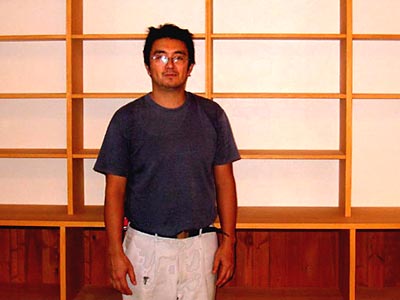
Mr. Uematsu in front of his work
 When the Japanese bubble economy started to collapse at the beginning of 1990s, I built a summer house in the Amagi Mountains, the roof of the Izu Peninsula.
When the Japanese bubble economy started to collapse at the beginning of 1990s, I built a summer house in the Amagi Mountains, the roof of the Izu Peninsula. After returning to Japan in 1989 from 5 years stay in Germany and China, I soon got tired of working in Japanese style and wanted to have a possibility to relax myself. A few years before this, a cousin of mine had built a villa in Kiyosato, at the foot of Mount Komagatake, and invited my family for summer vacation. Incidentally my intimate relatives had all small children at the time and we all enjoyed the stay in a freshly built log house in the highland forest. At the same time, I got to know that a good friend of mine from my university days in Kyoto also built a country house in Nasu, a famous resort area in the north of Tokyo. He also invited me to his house and we together played golf in a nearby club. There were also some other examples of building a summer house and I got obsessed with the idea to have my own house in the countryside.
Having a country villa is an enormous luxury in my childhood, which only a handful or rich families could afford to keep. I had a chance to visit Karuizawa and stayed in a villa of my father's company, when I was a first grader. Everything was so exquisite: the villa itself, the tennis court attached to it, Mikasa Hotel, the main street of Kyu-Karuizawa, buckwheat dumplings of Chimoto and the main tennis court of Kyu-Karuizawa, where the Crown Prince and Michiko-sama (present Emperor and Empress) frequently played tennis. Needless to say about the time before the World War Two, even after the War in the 1950s and 60s it was an incredible luxury and a status symbol to have a country house in Japan, in particular in Karuizawa.
Maybe that was the beginning of my obsession with a country villa. And there might have been many others who had similar obsession as mine. Therefore, when the living standard of the Japanese people rose, they found themselves in a position to acquire the status symbol of the establishment in the earlier times, country houses started to spread over Japan.
I was a latecomer, but I could get one in 1991. It was just after the introduction of complete five-day work week system by the Miyazawa cabinet in May 1991 and I could enjoy my new possibility in a quite effective manner. I could leave Tokyo in the Friday evening and enjoy completely quiet two nights and a very relaxing Saturday in the totally quiet mountains. Though my country house was not in Karuizawa, but in Izu, I became completely satisfied. I am sure, that I could not have been able to keep my mental health, if I had not got my summer house in those days, as I had high stresses in my business.
The merit of Izu, in particular Amagi Mountains, the highest peak of them reaches 1,400m, is that we can enjoy cool evening during the hottest season, and that we can at the same time enjoy sunny and hot coast with their sea delicacies. Also the nearest town, Ito, is a fascinating place. It is a spa resort. Though its best time was in the 60s and 70s, It still retains a sort of flair of a traditional spa resort in Japan and I can well enjoy there the better quality of life compared to the usual local towns.

What I have explained by now is just an introduction. Now I have to come to the today's topic. Today, I come to Izu to watch the set-up of my new built-in bookshelf. Different from women, I don't collect clothes, shoes and bags, but books and CDs. Or I don't intend to collect them, but they pile up without my noticing. I think they are really necessary for a quality life, but my wife does not want to understand it and tries to persuade me to throw them off as they occupy too much space. Therefore, it was my longstanding wish to build a large-scale bookshelf in the mountain house so that I can store a major part of my books there. It would then be a good basis, once I use the house after my retirement as the base of daily life.
However, a big bookshelf is also costly in Japan. So, I thought to make it myself using the possibility of a nearby DIY shop. The total materials would then cost some 100,000 yen (=$1,000), which is rather reasonable, but the manufacturing seems to be too troublesome. So, I tried to find another possibility through Internet and found a good carpenter in Izu. Mr. Uematsu proposed to make a 2.7m - 2.7m bookshelf at the price of less than 200,000 (=$2,000) yen.
I sent him my plan and we met once at his office to check the details. And today he came to my house to set up the pre-manufactured parts along the wall of our living room. He brought four parts into the room together with an aid. After putting them up in front of a wall, he started to adjust the bookshelf to the real shape of the floor and wall, as they are usually distorted slightly and deviate from the plan. Japanese carpenters do not allow any gap between their furniture and the surface of floor and wall. It was very interesting to watch how he combined four separate parts using some professional tools and long screws. When he fixed the bookshelf to the wall,
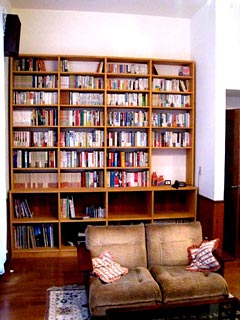 he used a special electronic tool, so that he could find the right place to drive screws.
he used a special electronic tool, so that he could find the right place to drive screws.Though Mr. Uematsu had told me that he would make the bookshelf with the refinement equivalent to DIY level, as I did not want to pay much, what he had done was really professional.
After the completion of work, I put the books I have in Amagi into the new bookshelf. I could trace my life in the last 30 years by those books I bought at different stages of my life. I cannot throw them off!